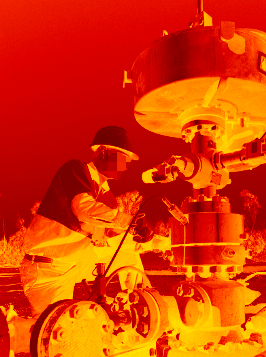Call to plot leaks as gas industry wells up
 A team of university experts has warned that the risks of coal seam gas mining could play out before governments get around to responding.
A team of university experts has warned that the risks of coal seam gas mining could play out before governments get around to responding.
While the coal seam gas (CSG) industry continues to develop at breakneck speed across Australia, Southern Cross University authorities say the question of how much methane is released as “fugitive” emissions has not been covered.
The latest paper on detailed maps of atmospheric greenhouse gases in Queensland’s CSG heartland exposed the lack of knowledge in the area of fugitive emissions.
Its authors say it means we cannot know is really CSG greener than coal.
“In 2012, we had at our disposal cutting-edge instruments not only to measure the concentrations of greenhouse gases with extremely high precision,” researchers Damian Maher, Douglas Tait and Isaac Santos write in a recent article for The Conversation.
“We could also detect their ‘chemical fingerprint’ to pinpoint sources.
“We drove to the gas fields of Queensland’s Darling Downs region, where CSG production has been proceeding at full steam for a decade or more... [and] detected increased methane levels across wide areas.
“A day’s drive had produced more data than was available from the CSG industry or the Queensland government after more than a decade of mining,” they said.
But the harsh criticism and outcry cause by this one study proved to the scientists that the issue impacted far beyond the academic world.
“It has been said that procrastination is the grave in which opportunity is buried,” the experts say.
“CSG wells have a typical lifetime of 10-20 years. Government reviews have taken 19 months to complete. Our initial experimental results have taken from 6 to 24 months to be peer-reviewed.
“Will the wells run dry before peer-reviewed science can explain what is coming out from them? Only time will tell.”
More details and links to the fugitive emission studies from Australian gas fields are available in the original article.








 Print
Print